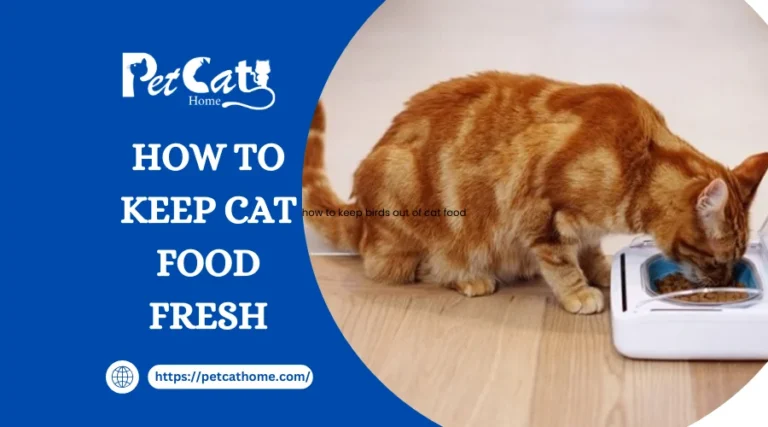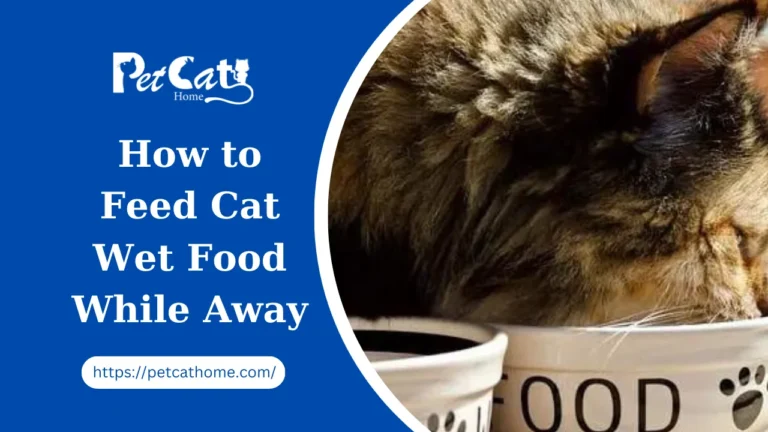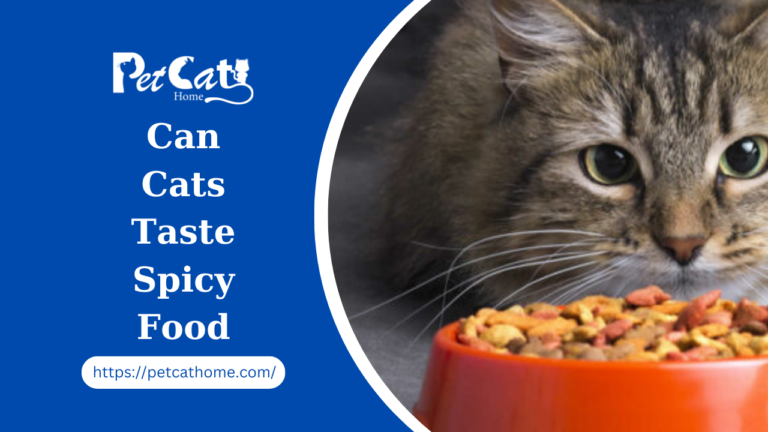Can You Recycle Cat Food Cans? Unlocking the Secrets of Sustainable Pet Care

Greetings from the world of conscientious pet ownership, where even seemingly insignificant actions like recycling cat food cans can have a significant impact. This post will go into the specifics of recycling, its effects on the environment, and creative uses for empty cat food cans.
Understanding the Recycling Process
The first step in recycling cat food cans is to comprehend the procedure. Usually composed of steel or aluminium, both of these cans are extremely recyclable. The recycling process lowers the energy required for production while also conserving resources.
Benefits of Recycling Cat Food Cans
Recycling is an attitude to sustainability that extends beyond trash management. You can lessen the amount of garbage that ends up in landfills, conserve energy, and lessen the need for raw materials by recycling cat food cans. Both the earth and your cat will benefit from it.
Types of Cat Food Cans That Are Recyclable
Cans of cat food are made of a variety of materials, such as steel, aluminium, and occasionally plastic. Making knowledgeable decisions about recycling is aided by knowing the composition. To find recycling rules and symbols, always read the label.
Recycling Guidelines and Best Practices
Observe some rules to guarantee efficient recycling. Rinse the cat food cans to get rid of any remaining food, labels, and materials. A smoother process for recycling is guaranteed by careful preparation.
Local Recycling Programs
Numerous localities have established recycling initiatives. Learn about the policies, collecting locations, and local initiatives. Your proactive participation contributes to the larger endeavour of building sustainable communities.
Creative Upcycling Ideas
Why confine yourself to recycling? Take your imagination to new heights with upcycling crafts. Repurpose cat food cans as planters, organizers, or even chic candlesticks. Turn discarded materials into beautiful and useful objects.
Challenges in Recycling Cat Food Cans
Recycling is important, but there are obstacles. Contamination is still a problem in some areas and there are inadequate facilities. Make sure you are knowledgeable about these issues and take action to make the most of your recycling initiatives.
Innovations in Cat Food Packaging
Businesses are rising to the challenge of sustainability. Learn about the most recent advancements in cat food packaging, such as the use of biodegradable materials and eco-friendly, minimalist designs.
Reusing Cat Food Cans in the Garden
Take your environmentally friendly actions outside. Discover how to use used cat food cans in planters to create a gorgeous and sustainable landscape. It’s an easy yet effective approach to combine ecological living with pet care.
Can You Recycle Cat Food Cans? A Comprehensive Guide
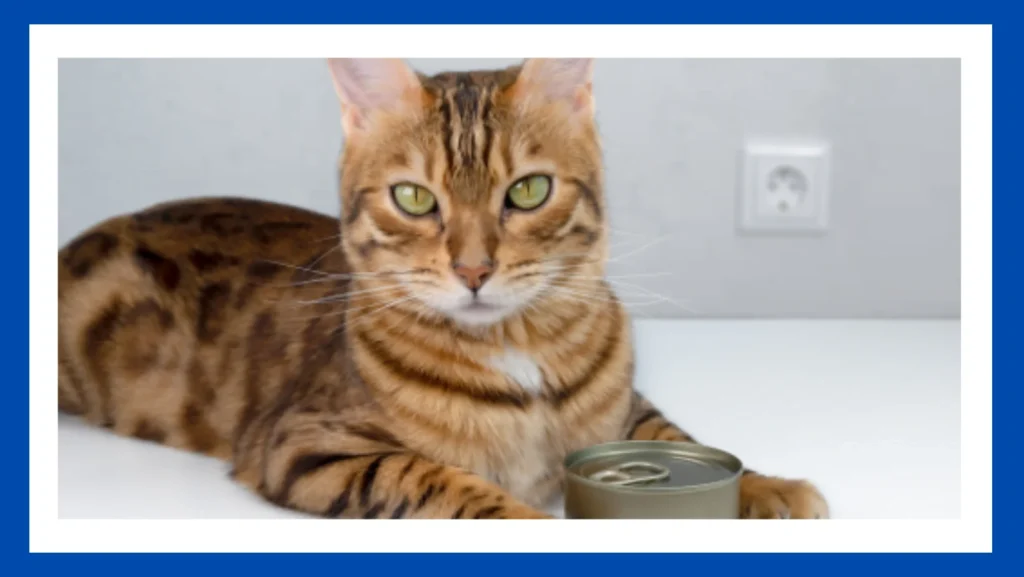
Do you own a cat and are unsure about what to do with the empty cat food cans that are accumulating in your kitchen? Ever ponder whether or not cat food cans can be recycled? You’re not by yourself! Reducing waste and protecting the environment are made possible by recycling. We’ll explore whether cat food cans are recyclable in this extensive guide, giving you all the knowledge you need to choose environmentally responsible options for your feline companion.
The possibility of recycling cat food cans will be examined in this article, along with the usual supplies used in their manufacture and the variables that may have an impact on it. You’ll find detailed guidelines on how to recycle cat food cans correctly, along with advice on how to empty, rinse, and get them ready for recycling. We’ll also talk about creative and reusable ways to repurpose cat food cans.
Thus, continue reading if you’re interested in learning more about how cans of cat food affect the environment and would like to take action by managing your waste responsibly. Together, let’s set out on this adventure to learn the ins and outs of recovering cat food cans and make a positive, sustainable impact on the environment.
Understanding Cat Food Cans
Cans of cat food are a common sight in homes with feline residents, offering a useful and easy way to feed our cherished animals. It makes sense to comprehend the components that go into making these cans as well as their uses and advantages when considering why cat food is packaged in them.
Two materials that are frequently utilized in the manufacturing of cat food cans are steel and aluminium. Aluminium cans provide many benefits, including good heat conductivity, resistance to corrosion, and lightweight design.
Conversely, steel cans are renowned for their strength and longevity, which makes them appropriate for safeguarding the contents within. These components not only guarantee the cat food’s integrity but also help the packaging’s overall convenience and safety.
Cans are used to package cat food for reasons other than only containment. Food quality can be gradually lowered by air, light, and moisture, all of which can be effectively prevented by cans.
Manufacturers can increase the shelf life of their cat food by sealing it inside cans, which keeps the food fresh and nutrient-rich until it is fed to the cat. To satisfy our cats’ nutritional needs and give them the sustenance they deserve, quality preservation is essential.
Furthermore, both pet proprietors and their furry friends might profit from using cans for cat food packing. Cans are convenient for pet owners because they are lightweight and simple to handle. Can save space because of their small size and ability to stack, which enables us to maintain an adequate supply of cat food without piling up on our shelves.
Can also show signs of tampering, giving consumers peace of mind that the food hasn’t been tampered with before opening. This safety measure guarantees that the food our pets ingest satisfies the strictest requirements for quality and cleanliness.
The ability of cat food cans to maintain texture and flavour is one of their main advantages. Because cats have such discriminating tastes, it’s important to preserve the flavours and scents that appeal to them in the packaging. Can successfully shield food from outside influences that might change its flavour, so our feline companions can enjoy every meal just as much as the first.
It is not surprising that cat owners are using cat food cans so frequently and with such tremendous popularity. They are a reliable option because of their ease of use, robustness, and capacity to maintain the flavour and freshness of cat food. Cat food cans provide pet owners with a useful option, whether they’re using them for larger servings or individual portions.
Recycling Basics
Recycling is essential for cutting waste and safeguarding the environment. Here is a quick summary of the advantages for the environment, recyclability, and the recycling process:
The Recycling Process
- Collection: Materials suitable for recycling are gathered from a variety of sources.
- Sorting: For efficient processing, materials are arranged according to kind.
- Processing: The materials are divided into smaller bits and cleaned.
- Manufacturing: New items are made from recycled materials.
- Distribution and Consumption: Recycled resources are utilized to make products that are distributed.
- End of Life: The product’s life cycle can be completed by recycling it once more.
The Concept of Recyclability
Recyclability is influenced by market demand, pollution levels, material composition, and recycling infrastructure. Recyclable materials are more recyclable when they are cleaned and separated properly.
Environmental Benefits of Recycling
- Recycling helps to preserve natural resources, including minerals, water, and wood.
- Energy Savings: Recycling uses less energy than producing goods from virgin resources.
- Waste Reduction: Recycling lessens the quantity of waste dumped in landfills, which has a positive effect on the environment.
- Emissions Reduction: Recycling lessens pollutants and greenhouse gas emissions from the extraction and processing of raw materials.
We help ensure a more environmentally friendly and sustainable future for our world by adopting recycling behaviours, encouraging recyclability, and knowing the fundamentals of recycling.
Factors Affecting Cat Food Can Recyclability
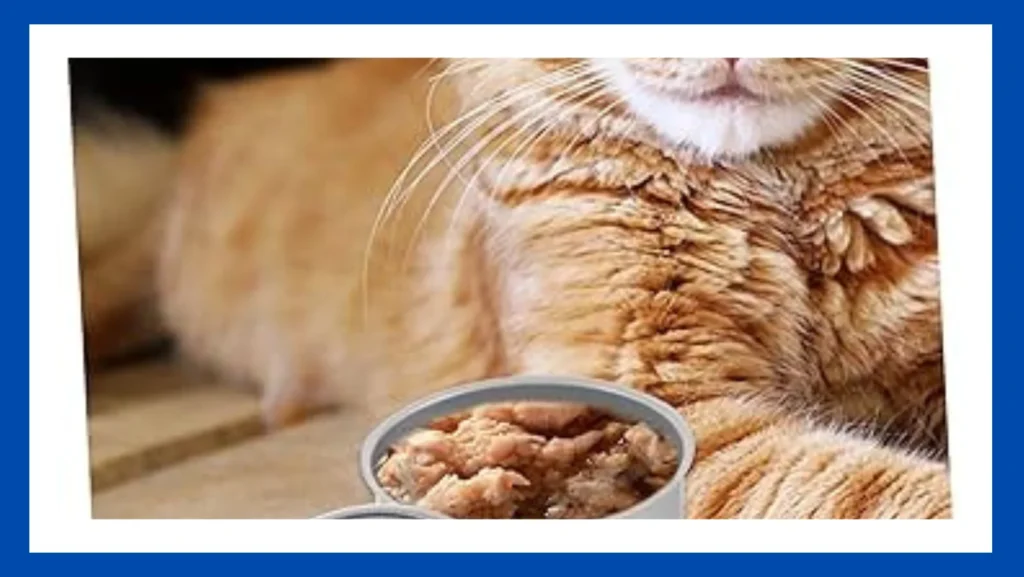
The recyclability of cat food cans is influenced by many factors. To promote efficient recycling procedures, it is imperative to comprehend these variables. Now let’s examine the main factors that affect how recyclable cat food cans are.
Material Composition
The material that cat food cans are made of has a big influence on how recyclable they are. Most cat food cans are composed of steel or aluminium. Aluminum’s capacity to be recycled endlessly without losing its qualities makes it a highly prized material. Contrarily, steel can also be recycled, however it might take more energy to do so. Both materials have benefits, and when choosing the right material for their cans, producers frequently take affordability, durability, and harmful effects on the environment into account.
Labelling
Cans of cat food should be labelled clearly and informatively to encourage recycling. Cans are easier to identify and sort for recycling facilities and consumers when they are properly labelled. To help people with the recycling process, labels should have recycling symbols, directions, and any pertinent information. Manufacturers help ensure that cat food cans are generally recyclable by providing clear labelling, which also empowers customers to make educated decisions.
Contamination
One major obstacle to cat food cans being recyclable is contamination. Before recycling cans, they must be well rinsed to get rid of any food residue. Not only does contamination interfere with the recycling process, but it can also result in a rejection of complete batches of materials that could be recycled. Cans that are cleaned and rinsed correctly help preserve the confidentiality of the recycling stream, guaranteeing that the materials may be processed and reused.
Size and Shape
Cans of cat food affect how well recycling procedures work based on their size and shape. From a recycling standpoint, smaller cans are usually chosen because they need less energy to process and take up less room during transportation. Standardized-shaped cans are also simpler for recycling facilities to handle and sort. Manufacturers can enhance the overall efficacy and efficiency of the cycling system by taking can size and shape into consideration.
Local Recycling Regulations
Cans of cat food are recyclable or not depends largely on local recycling laws. The infrastructure and recycling regulations in different areas may differ. While some locations might have state-of-the-art recycling facilities capable of handling a variety of materials, others might have restrictions. To ensure conformance and optimize the potential to be recycled cat food cans, manufacturers and customers alike need to become knowledgeable about local recycling legislation and requirements.
We can improve cat food cans’ recyclability by taking care of the following issues: material composition, packaging, contamination, shape and dimensions, and local recycling laws. To ensure that cat food cans can be recycled effectively and contribute to a cleaner, greener future for our world, manufacturers, customers, and recycling facilities all have a crucial role to play.
Recycling Cat Food Cans: Step-by-Step Guide
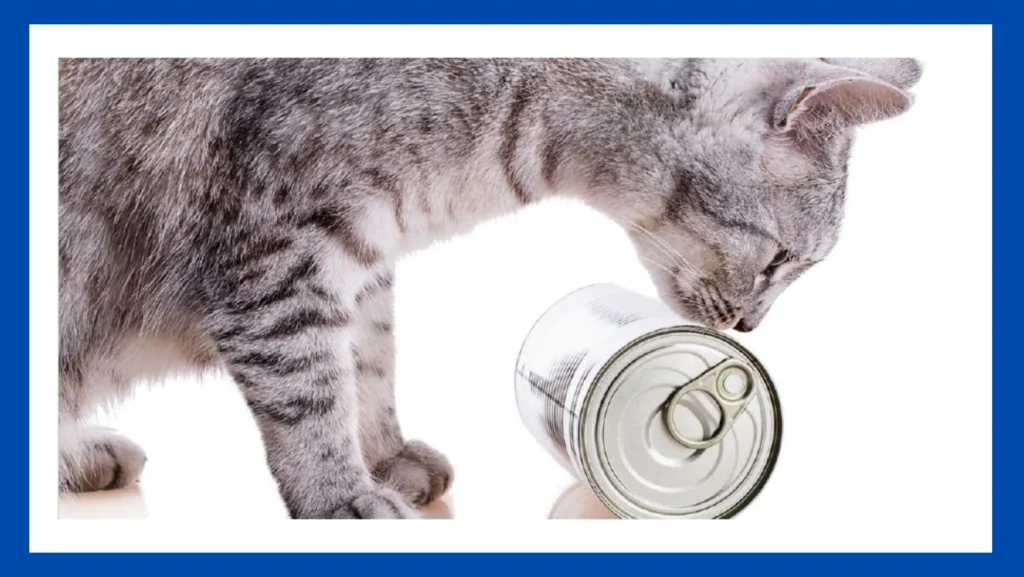
By recycling cat food cans, we can contribute to a more sustainable environment as long as we follow the right procedures. The following is a detailed guide on recycling cat food cans:
Step 1: Empty the can
It’s important to empty the can before recycling. By taking this precaution, you can be sure that no cat food leftovers will contaminate the recycling process. If it is possible, think about composting leftover cat food for disposal. Alternatively, put it in the garbage can after sealing it in a plastic bag.
Step 2: Rinse the can
It is essential to give the cat food can a good rinse to get rid of any leftover food residue before recycling it. Rinsing aids in avoiding contamination and smells while being transported and stored. To clean the can, just use a little dish soap and warm water. Make sure you get rid of any adhesive residue and labels.
Step 3: Check local recycling guidelines
There may be particular recycling laws and policies in place in each community. To guarantee compliance and optimize the recycling process’ effectiveness, it is crucial to refer to your community’s recycling regulations. Visit the website of your municipality or get in touch with the recycling hotline to find out about permitted materials, collection times, and any other requirements.
Step 4: Prepare for recycling
The cat food cans must be ready for recycling before recycling. Take off any plastic or paper labels from the cans since it’s possible that these materials can’t be recycled. To save room and to make them easier to handle throughout the recycling process, flatten the cans. Make sure you adhere to any other guidelines that may be unique to your community’s recycling program.
Step 5: Recycling options
Depending on where you live, there are various ways to recycle cat food cans. Curbside recycling is a popular choice in which you deposit the cans in the appropriate recycling bin for pickup by your trash management provider. Using neighbourhood drop-off locations provides an additional choice for where to dispose of your recyclables. Cat food cans may also be accepted by recycling centres as part of their programs to recycle. To find out the best way to recycle cat food cans, contact your local recycling centre.
Step 6: Alternatives to recycling
Although recycling is the best use for cat food cans, there are other uses and purposes for them as well. Think outside the box and come up with some DIY projects to do with the cans. They can be used as crafting supplies, plant pots, or even storage containers. Cat food cans can be reused to increase their useful life and reduce waste.
You may guarantee that cat food cans are recycled correctly, reducing environmental impact and promoting a more sustainable future, by following this step-by-step guide. Recycling is a community effort, therefore keep in mind that even a tiny contribution can have a big impact. By adopting appropriate recycling methods, we can all work together to improve the environment.
The bottom line
But before returning cat food cans, there are a few things to think about. To create cat food, one must be aware of the ingredients used, and to dispose of it appropriately, households must adhere to local recycling regulations. By emptying and washing the cans before recycling, we can improve the recycling process and lessen contamination.
There are several ways to recycle cats that will help save the environment and reduce trash. Recycling keeps non-biodegradable items out of landfills, lowers energy usage, and conserves important resources. Recyclable cat food cans help create a future where environmental consciousness is higher.
Recycling is merely one way to ensure the safety of your garbage. Another inventive and more ecologically friendly option is to recycle cat food cans. Giving little items a second life and minimizing environmental impact can be achieved through organizing them, and repurposing them as unique DIY projects, including recycling cans.
We must make choices that will lessen our waste and raise awareness of it. If we adopt recycling habits into our daily lives, they can have a tremendous positive impact on the environment and inspire others to follow suit. Therefore, if you’re going to purchase cat food, make sure it’s ecologically friendly, rinse it off after use, and research your local recycling regulations.
FAQs
Cans of cat food be recycled in a standard recycling bin?
Of course! Put the rinsed cans in your recycling bin. Just be careful to look for any special rules in your local recycling standards.
Which kinds of cat food cans cannot be recycled?
Cans composed of composite materials or ones with a lot of food residue may provide problems. It’s best to keep these apart from other recyclables.
Can dented cat food cans be recycled?
Yes, recycling generally accepts cans with dents. In case the can sustains significant damage, it is advisable to refer to the local regulations.
Apart from recycling, are there any inventive applications for cat food cans?
Of course! You can make planters, planners, or even one-of-a-kind artwork out of cat food cans. Allow your imagination to run wild!
Conclusion
In summary, recycling cat food cans is a commitment to a sustainable future that extends beyond trash management. While taking care of your feline friend, you can have a big environmental impact by implementing ethical behaviours and innovative ideas.
